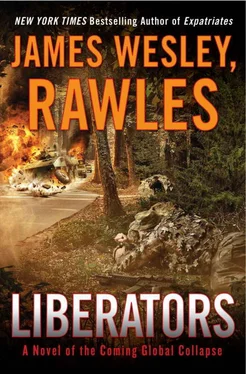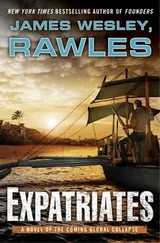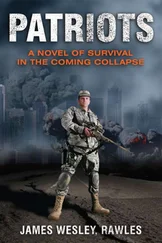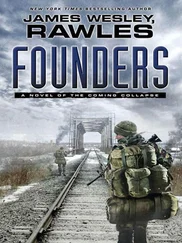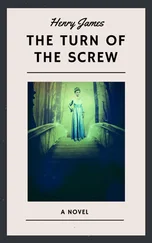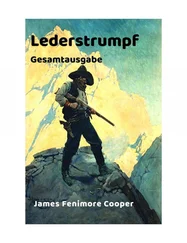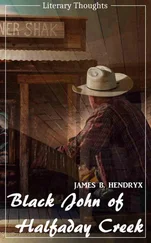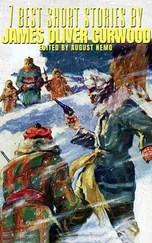Whenever helicopters were heard, resistance fighters would quickly head under a tree canopy cover and don homemade equivalents of Raven Aerostar Nemesis suits. The Nemesis overgarments—nicknamed “Turkey Suits”—included a jacket, pants, hood, and face shield, all made with Mylar underneath uneven layers of fabric. The suits mimicked foliage and blocked the transmission of infrared heat signatures. (Emissivity is the value given to materials based on the ratio of heat emitted compared to a blackbody, on a scale from zero to one. A blackbody would have an emissivity of one and a perfect reflector would have a value of zero. Reflectivity is inversely related to emissivity and when added together their total should equal one for an opaque material.) The IR emissivity of Nemesis suits was between .80 and .82, which was close to that of vegetation, whereas human skin had an emissivity of .97, which was just below asphalt at .98.
The fighters who lacked Nemesis suits would cover themselves with heavy-duty olive-green space blankets, supplemented by a top layer of untreated green or brown cotton fabric. (Cotton, as a plant fiber, did a good job of mimicking vegetation.) When constructed, these blankets had all of their edges altered by trimming or by tucking and stitching, so that they did not present any straight lines or ninety-degree corners against the natural background.
Just by themselves, the cotton-covered commercial space blankets—which were silver Mylar on the inside and olive-green plastic on the outside—did a fair job of obscuring IR signatures. Without a distinctive human form, the covered resistance fighters would be invisible for the first twenty minutes. Then, as spots on the space blanket eventually warmed with the transmission of body heat, they would look like indistinct blobs that could not be distinguished from the heat signatures of wild game and range cattle. But if someone wrapped himself tightly in a space blanket, then a FLIR could detect a distinctive human outline in less than an hour. Eventually the NLR fighters learned to position branches to create an air space between their bodies and the blankets, so that the blankets would not be warmed above the ambient air temperature. (FLIRs could distinguish temperature differences as small as one-half of one degree.)
The other trick that they learned was to curl up into the fetal position, so that the distinctive outlines of their arms and legs were not obvious. One two-man sniper team even tried getting on their hands and knees whenever they heard a helicopter, hoping to resemble the heat signatures of bears. The resistance fighters appreciated the fact that there were so many wild game animals and so many cattle in British Columbia, providing a wealth of false targets for the FLIRs.
Bare faces and hands (with high IR emissivity) were a no-no. Gloves and face masks made of untreated cotton in earth-tone colors were de rigueur . (Since camouflage face paint had about the same emissivity as bare skin, it was ineffective in shielding from FLIRs.) The same rule applied for uncovered rifle barrels, plastic buttstocks, and handguards. These were all wrapped in two layers of earthy-tone burlap. Overcoming active IR was much more difficult than overcoming passive IR. Fortunately, few UNPROFOR soldiers used IR pointers or searchlights. Resistance units learned that standard cotton camouflage military uniforms (such as BDUs and Canadian DPMs) did not reflect much IR from an active source, but once they had been washed with modern detergents or starched, they became veritable IR beacons. The detergents with “brighteners” were the worst offenders, since they also gave cloth infrared brightness.
Preoperational IR clothing checks became part of the “inspections and rehearsals” SOP for resistance field units, both day and night. The fighters would first be observed with a starlight scope and given three “right face” commands. This was then repeated with the scope’s IR spotlight turned on, and they would be “painted” up and down by the IR spotlight. Any clothing that failed the IR reflectivity test had to be discarded and put in a designated “decoy” duffel bag.
The overly IR-reflective clothes and hats from the decoy bag were later used to create fake resistance encampments, intended to lure UNPROFOR ground units and aircraft. “Scarecrows” constructed of branches wearing the reflective clothes were either proned out or stood up. Plastic milk jugs (with about the same IR emissivity as human skin) took the place of heads, and rubber examination gloves filled with soil stood in for hands. The scarecrows were topped with boonie hats or pile caps that had been washed in brightening detergent. When seen at a distance from a helicopter, the scarecrows were surprisingly effective, prompting the UNPROFOR helicopter crews to waste many thousands of rounds from their machine guns. They even credited one or more “confirmed kills” in some of these incidents. The ALAT was notorious for failing to follow up with ground action after aerial attacks.
The French made most of their Reconnaissance et Interdiction (REI) flights using their pair of Gazelles. These flights used a crew of three: pilot, copilot, and door gunner. They also could carry two “dismounts.” Typically these would be a FN-MAG machine gunner and a sniper. They preferred to have the Gazelles operate as a pair for maximum effectiveness.
Following the loss of most of their APCs and trucks in the sinking of MN Toucan and MN Colibri, UNPROFOR systematically requisitioned civilian and corporately owned pickup trucks in British Columbia. Using Ministry of Transportation vehicle licensing abstracts, they searched for heavy-duty Ford and GMC pickups that were less than four years old and that were painted green or brown. Composite teams of RCMP officers and French Marines were sent to the registered addresses, carrying seizure paperwork printed in both French and English, and stacks of newly printed Canadian Provisional Government currency. Curiously, owners with French surnames never had their pickups requisitioned. These forays were more successful than their aborted attempts to disarm registered gun owners.
Owners of the pickups were forced at gunpoint to sign “voluntary” title release agreements and to sign receipts for the cash that they were handed. Once the pickups were driven back to the garrisons, they were spray-painted in flat camouflage patterns, and twelve-inch-tall “UN” stencils were applied to the doors, hoods, and tailgates in light blue paint.
• • •
The new war of resistance in Canada had some interesting aspects stemming from the U.S. border. In the early stages of the guerrilla war, American citizens were busy with a war of their own. After the corrupt U.S. ProvGov led by Maynard Hutchings and his cronies at Fort Knox, Kentucky, was overthrown, however, attention to the situation in Canada reached prominence. Inevitably, small arms, ammunition, and explosives began to cross the border, starting as a trickle, but eventually becoming a torrent. The Canadian Border Logistics and Training Volunteers (CBLTV) network sprang up and grew rapidly. The group, whose acronym was half-jokingly spoken as “cable TV,” included thousands of U.S. citizens in border states and beyond.
The flow of arms to the resistance in Canada from the CBLTV did not go unnoticed. The Ménard government publicly chastised it as “the fiendish work of the CIA” when in fact nearly all of the materiel was donated and transported by private individuals. LGP soon announced a Land Purchase Plan for all privately held or tribally held land within ten kilometers of the U.S. border. This program was mandatory, and the forced resettlement all took place in a ninety-day span, starting in May. The only exception was incorporated areas, where towns and cities were in close proximity to the border.
Читать дальше
